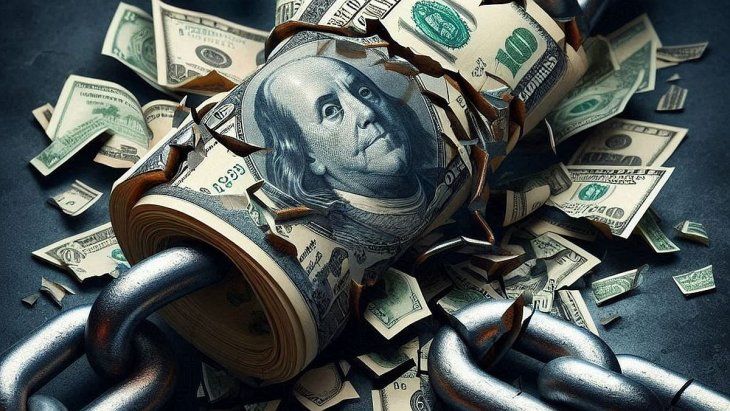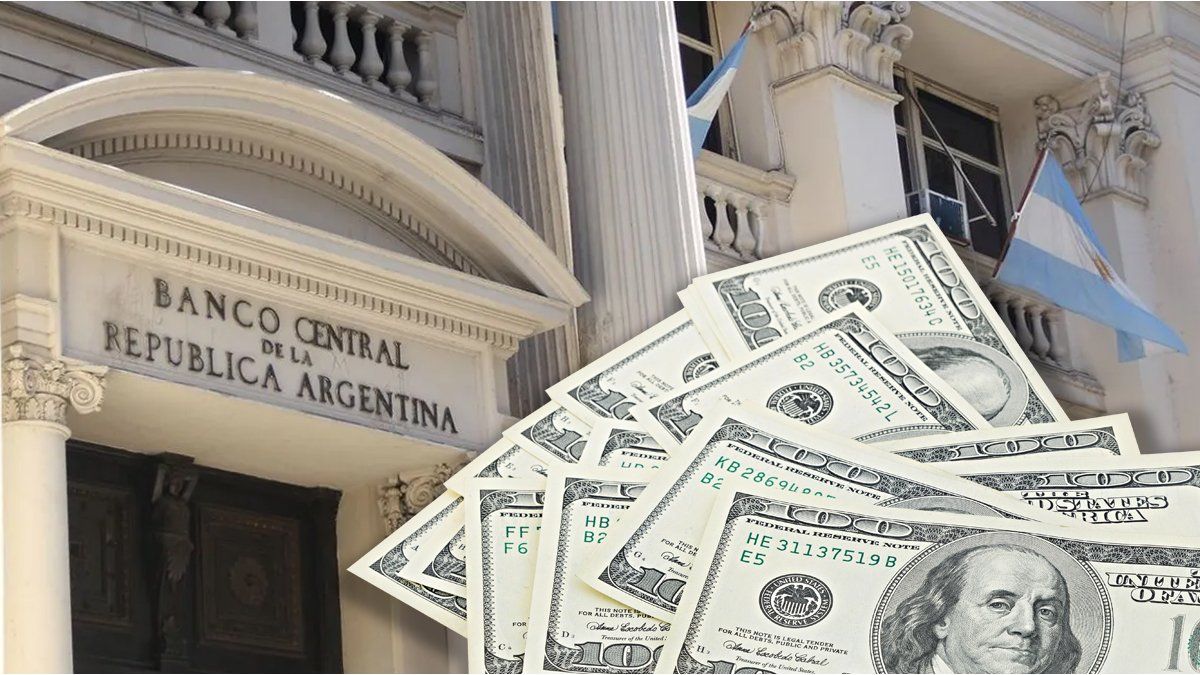The Government advances negotiations with banks to close a loan, of the Repro type, that strengthens the BCRA’s reserveseager for dollars to strengthen the economic plan of Javier Milei. Among the final objectives is the exit from the exchange rate. This was confirmed by high official sources consulted by Scope.
In the last few hours, versions circulated in the market that the economic management of Minister Luis Caputo is close to closing Repro with an important foreign capital bank. The Treasury neither confirms nor denies.
“There have been negotiations since December, it’s common,” a source responded to this medium when consulted. “It is not a new or defining milestone. We are monitoring conditions and will evaluate, as the administrators say, ‘opportunity and convenience’ all the time,” he explained.
The source concluded that “At some point, if it seems to us that it makes sense, we will be able to carry out the operation”while admitting that “today the terms are more attractive and it contributes more than in May.”
The Government’s idea is that the Repro interest rate is only one digit. As collateral, alternatives are being considered, such as bonds, including Bopreales. For now, the name of one bank has circulated strongly, but others could join. It should be remembered that Caputo was meeting with investors on Wall Street last week in search of support in banknotes for the Javier Milei management.
Caputo Cereal Bag.jpeg
The Minister of Economy, Luis Caputo.
Objective: get out of the dollar trap
With the strengthening of reserves and the financial scenario, The Government’s final goal is to exit the exchange rate trap, a complex piece of engineering that it has not yet been able to dismantle while evaluating the necessary variables to do so. It is an inheritance that Milei despises, but with which for the moment she must live.
“With stocks the country can grow, but without stocks much more,” a high-ranking source from the Casa Rosada told Ámbito days ago. And he announced that “October is going to be a key month to see how we move forward with the release of the stocks.”
It happens that the next few weeks will be key for Caputo and his team because the dollars from the bleach, whose phase 1 will finally expire on October 31 after the month of extension. In the market they risk figures of how much would arrive in cash, without counting other assets. There is talk of between US$5,000 and US$9,000 million. With the extension, perhaps some more laggards will enter the exteriorization. In total, private calculations predict that some US$40 billion could be regularized.
dollar stocks.jpg

The result of the money laundering is just one of the conditions that the Government expects to define the exit from the dollar stocks. It also looks at tax collection (after the moratorium and the modification in the payment of personal assets) and the evolution of inflation, among other key variables.
Linked to this issue is the growth of dollar deposits, which currently rose to $24,561 million, their highest level in five years.
You also look at the inflation, as Milei himself explained at the beginning of the week when he spoke to investors on Wall Street, during his time in the United States.
Sources consulted by Ámbito also point out that the external front needs to improve to advance in the exit from the stocks. This is reflected in the recent 50 basis point reduction by the United States Federal Reserve and the prospect of a review of the surcharges charged by the International Monetary Fund, which would imply savings of 300 million dollars annually.
Dialogue with the IMF
Although regular contacts are maintained between the Argentine authorities and the IMF staff, The strategy of the Ministry of Economy contemplates that formal conversations will only begin at the end of October to define a new agreement (the current one expires at the end of the year).
The date is not capriciousit is expected that at the end of next month the multilateral organization will finally decide to reduce the surcharges it applies to nations that are highly indebted.
Also in this matter of external debt, a study that circulated in recent days in official offices calculates that, even under adverse conditions (for example, a rise in interest rates), the primary surplus required to maintain the debt/GDP ratio constant It is approximate to that included in the 2025 Budget.
In other words, it is estimated that a surplus of 1.3% of GDP above primary expenditures is the fiscal effort necessary to ensure the sustainability of public debt.
The expectation of the team led by Luis Caputo is that Argentina, today considered “the best student of the Fund” obtain a favorable refinancing of your liabilities.
The strategists of La Libertad Avanza also hope that an eventual victory of Donald Trump at the beginning of November in the presidential elections of the United States (the country that has the greatest decision-making power on the IMF Board) will facilitate the granting of fresh money to the country.
One fact that is discussed internally in the Government is that the technicians were asked to calculate how much the foreign exchange reserves had to amount to in order to completely release the stocks without incidents. The result was 35 billion dollars, “a figure that we could accumulate in seven years,” they ironically point out in the Ministry of Economy. Since no one plans to wait that long, they conclude that they will have to take a risk.
The economic team considers that, although the economy can continue to recover with restrictions, for activity to gain momentum it is necessary to remove the restrictions. “This is what will allow, for example, Argentina to once again be eligible for investment funds,” they point out in economic management.
Subject to the results obtained in these months, the Treasury Palace is working with the hypothesis of taking significant steps in the dismantling of the stocks with the beginning of next year.
Source: Ambito




